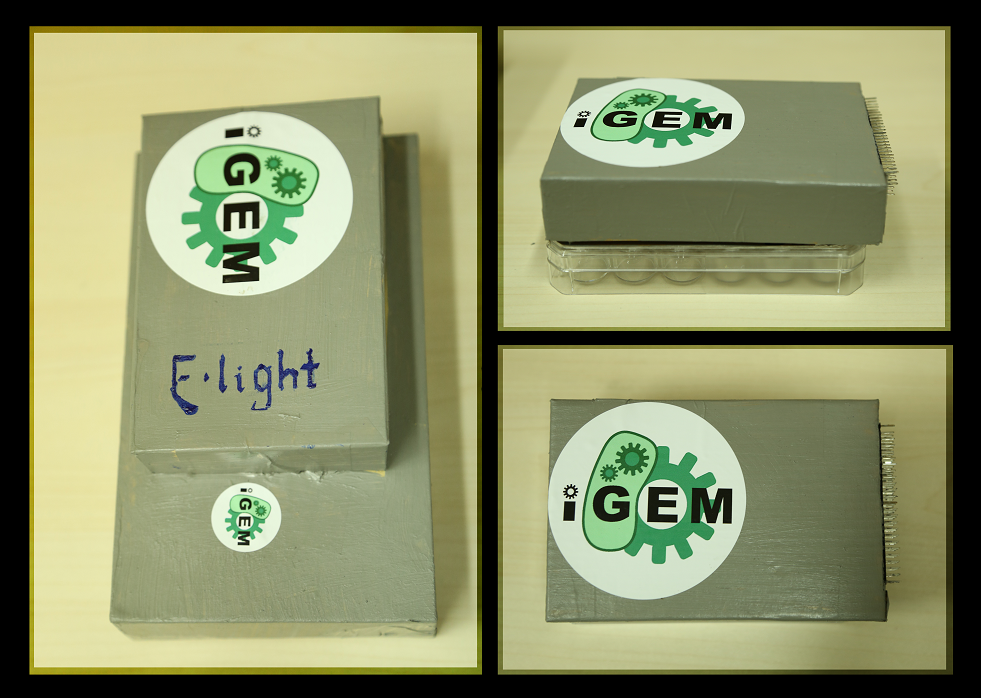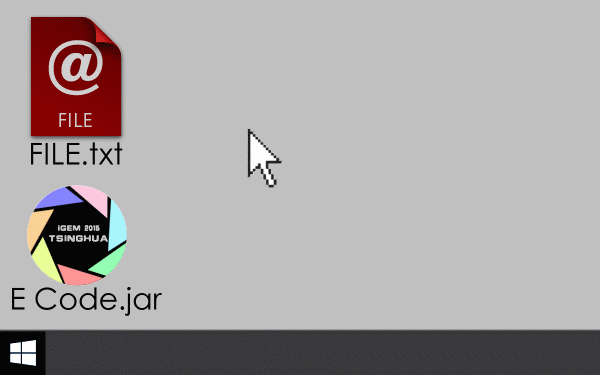Team:Tsinghua/Hardware
HARDWARE
Hardware: E-light 1.0
The E-light 1.0 hardware system has 3 major components: the light-exposure & bacterial culture system, the controlling circuit and the computer interacting port.
The light-exposure & bacterial culture system is based on a 24-well plate coupled with tri-color LEDs. The controlling circuit utilizes 3 AT89S52-24PU DIP-40 SCMs (single chip microcomputer) to execute programmed-controlling of the 24 tri-color LEDs, while the computer interacting port monitors the whole system through given protocol sequences. The ultimate result is the programmable operation and real-time monitoring of light-exposure (on both timing and wave-length) on every single well.
Here below shows the appearance of our device:
Bill of Materials |
|
Materials |
Amount |
IC: AT89S52 |
3 |
IC: STC89C52 |
1 |
Minimum system circuit |
3 |
Common cathode RGB tri-color LED |
24 |
8050 triode |
24*3 |
1K resistor |
24*3 |
USB-RS232 |
1 |
Flat cable &Ejector plate& Cable |
several |
Our collaborative team, Tsinghua-A, has tested our hardware device and they had a great experience. Here links to their feedback: https://2015.igem.org/Team:Tsinghua-A#collabration
Software: E-code 1.0
The E-code 1.0 software system aims to provide convenient commanding for users of the E-light hardware system. The software provides two operating modes: the E.coli-code mode is able to convert any given information into light-coded files, and therefore turn these files into actual light-exposure commands of the E-light hardware system. With the help of the coding-plasmids from our CRISPR-Recombinase system, we can eventually store any information into the E.coli DNA and of course, extract the information later on through sequencing. The self-code mode provides more flexible input options, enabling users to program the light-exposure commands manually for every single bacterial-culture-unit. Thus, combined with our light-switch, the user is able to gain better control over the bacteria’s metabolism pathways.
After successfully constructing all the systems required and confirming its efficacy, we can bridge the light-switchable TCS and the dCas9-recombines system together. In this way, precise gene editing and information storing can be achieved by utilizing the light system to regulate the dCas9-recombinase hybrid.
Here below is a simple demonstration of our embedded software in the hardware:
Hardware Tutorial
We Tsinghua team have recorded a video tutorial for our potential hardware users:







